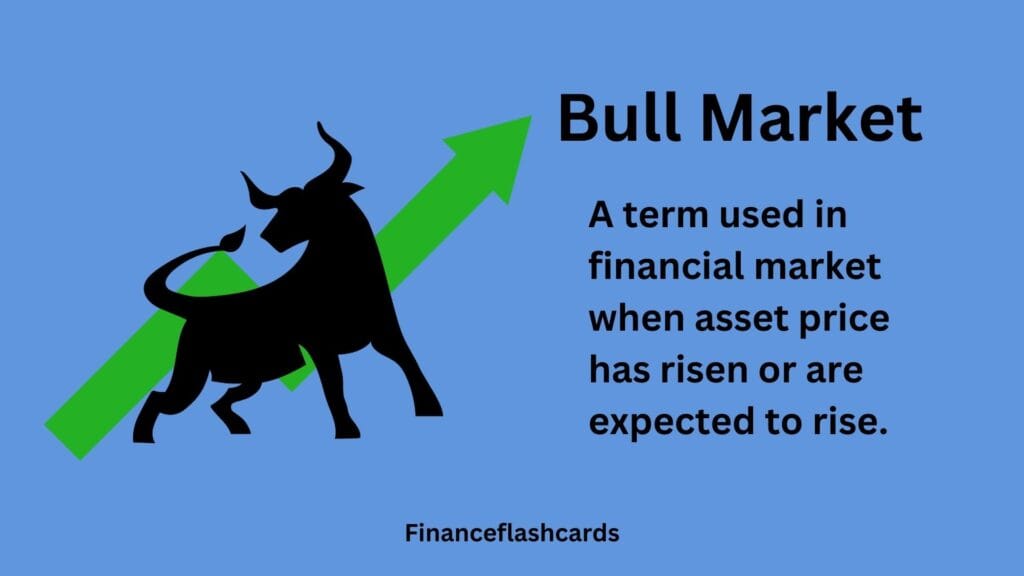A bull market is a period of sustained rising prices in financial markets, typically caused by strong investor confidence, economic growth, and positive market sentiment.
Table of Contents
What Is a Bull Market?

What drives a bull market?
When the economy is doing well, businesses earn more money, unemployment rates are low, and consumers spend more money. This creates a positive feedback loop in which investors are eager to buy stocks, expecting prices to continue rising. This demand pushes prices even higher, accelerating the upward trend.
Causes
A bull market typically begins when economic and market conditions improve after a period of stagnation or decline. Here’s how it usually starts:
Improving Economic Indicators: Signs of economic recovery, such as rising GDP, decreasing unemployment, and increased consumer spending, often signal the start of a bull market.
Strong Corporate Earnings: Companies begin reporting better profits, driven by improved demand for goods and services, which attracts investors looking for growth opportunities.
Low Interest Rates: Central banks may lower interest rates to stimulate borrowing and spending. Lower borrowing costs encourage businesses to invest and consumers to spend, fostering economic growth.
Market Bottoming Out: A bull market often follows a bear market or a significant market correction. As prices reach perceived lows, bargain-hunting investors start buying, creating upward momentum.
Liquidity Inflows: Higher inflows of capital into financial markets—either from institutional investors, retail participants, or foreign investments—provide the fuel for a bull market’s upward trajectory.
Characteristics
- Rising Prices: The most notable feature is a consistent upward trend in the prices of stocks, bonds, or other assets.
- High Investor Confidence: Optimism and positive sentiment dominate, with investors expecting prices to continue rising.
- Strong Economic Indicators: Indicators such as GDP growth, low unemployment, and increasing consumer spending support the bullish trend.
- Speculation and Risk-Taking: As confidence grows, some investors take on more risk, often venturing into speculative investments.
- Increased IPO Activity: Companies are more likely to go public during a bull market, seeking to capitalize on high valuations.
How to Benefit From a Bull Market
Historical Bull markets
- The 1980s-2000s Bull Market: This long bull market, fueled by technological advancements, deregulation, and economic expansion, lasted from the early 1980s until the dot-com bubble burst in 2000. It saw significant growth in stock indices such as the S&P 500 and the NASDAQ, with technology stocks leading the way.
- Post-2008 Financial Crisis Recovery (2009–2020): Following the global financial crisis, markets experienced a strong and prolonged recovery, fueled by low interest rates, government stimulus, and technological innovation. The bull market lasted for more than a decade, making it one of the longest in history.
- The 1990s Bull Market: This was marked by the expansion of the internet and technology sectors, with the NASDAQ rising dramatically. The period ended with the burst of the dot-com bubble in 2000, but it is still remembered as one of history’s most significant bull markets.
Final Thoughts
Bull markets typically last for long periods of time and are characterized by increased demand for securities, rising corporate profits and GDP, and falling unemployment. A bear market, the polar opposite of a bull market, is defined by falling prices and investor pessimism. The terms “bull” and “bear” are thought to originate from the manner in which these animals attack their opponents.

